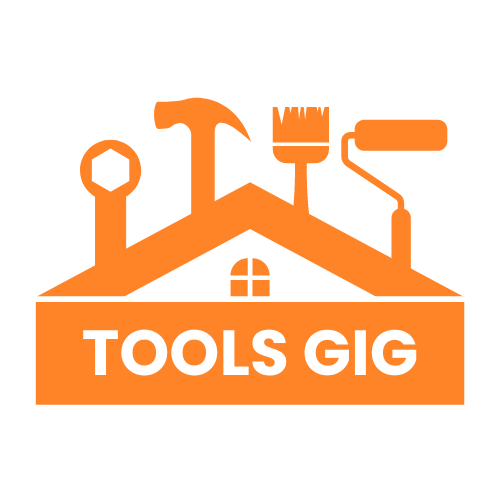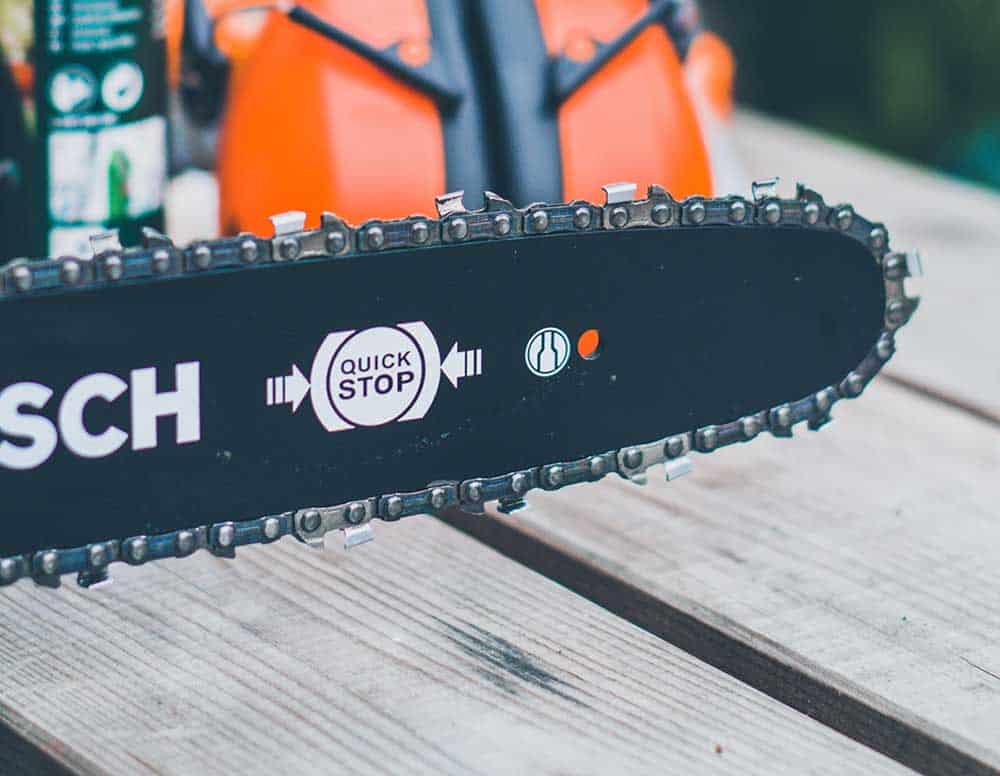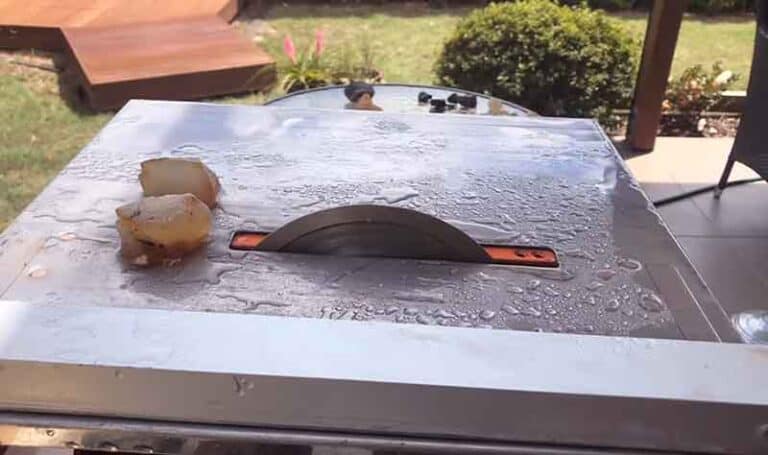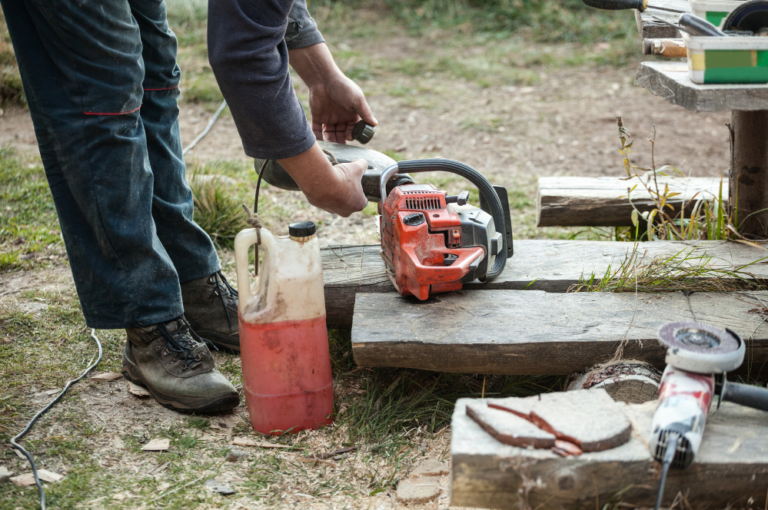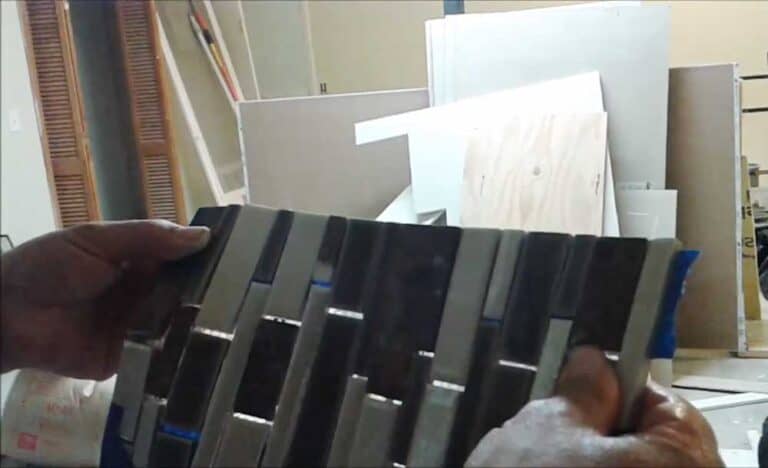How tight should a chainsaw chain be? The Complete Guide!
As an Amazon Associate I earn from qualifying purchases.
Almost everybody knows what a chainsaw is. A chainsaw is a cutting tool used for various purposes of heavy-duty cutting jobs, especially for wood cutting. There is an automatic and manual saw. Manual one runs with the motion of hands, but the automatic saw runs through a motor.
The motor’s rotating power is transferred to the cutting blade of the saw through a metal chain. There are also many kinds of variations among the chain saw. We should go through all the matters about this stuff throughout the article.
Contents
Purpose of the chain in a Chainsaw
The main role of a chain in a chain saw is to transform the rotating power from the motor to the blade of the saw. So, the chain must be maintained very carefully so that any accident will not take place.
Adjusting the chain for different operations is often a very risky task to be done. A loose chain in the chain saw will cause a kickback effect in the machine and it can roughly move or jumped from the guideline of work. So, the chain must be checked before any kind of operation.
If the chain is not in proper tension
If the chain is not in the proper tension or properly tighten, then there is a considerable risk of mechanical hazard, any uncertain situation will occur.
Two things will happen if the chain is not in proper tension. If the machine runs at high speed and the chain is overtightened, then the guide bar will start to curve, and then the chainsaw might get broken, and serious injury will occur.
Secondly, if the chain is loose, then the chain should jump out from the machine and hit someone nearby.
The important fact is the chain gets loosen after every operation. So, we must give proper concern about it and maintain the chain according to the purpose of work.
How much tension should we provide to the chain?
To maintain safety in any general operation, the chainsaws chain should be snap tight. This is the ideal condition of a chain in the machine.
Snap-tight is a professional term that is used in this field of work. It means the chain should be tightened to that point where one should be able to pull the chain up until the link of the drive is partially get opened but not get free. It must snap back into its position. Some tests also check the chain condition and tension whether the chain is in proper tension or not.

The snap test of a chain
To test through this method, you have to pull the chain apart from the guide bar in maximum magnitude. Then if the snap gets back in its place, the chain is in proper tension.
What I mean when you pull down on the chain, you should see part of the drive links underneath, like 3/4 of them, and then the chain will spring right back.
If the result proves you cannot pull the chain away from the bar, it is in high tension. Your chain might get broken during the operation in this sort of condition.
Another condition, if the chain gets in your hand easily, then it is very loose. In this case, the chain might jump off from the machine and hit someone.
The pulling test of a chain
This is a straightforward and easy test. To do this type of test, you just need to pull the chain from the guide bar gently. Don’t apply too much force to pull the chain.
If the chain gets out from the bar exposing the link then it loses. If you are losing your grip during pulling without any chain movement, then it is in extra tension.
Maintain the chain‘s tension

If the chain is in extra tension or extra loose, then you must fix it before an operation. To do this task first you have to look at some things. You have to locate the tension screws, grab the proper tool like hammer, screwdrivers, pillars, and finally tighten the chain.
To locate the tension screw, you must have some basic knowledge about your chain saw. I am describing the three most common positions of the tension screws.
- These are situated in the side panel of the saw between the bolts which helps to hold the guide bar.
- Sometimes these are found in the front panel of the saw. Just right to the guide bar and besides the bucking spikes.
- Some heavy-duty chainsaws have an integrated tension system. So no tension screw will be visible to you. In this type of machine, there must be an integrated handle that will make you able to adjust the chain’s tension.
Then after locating these tension screws, loosen the nuts with a chainsaw scrench. Insert it into the intense slot of the guide bar. After that, turn it until you get the proper combinations.
There are also some tools; by using those, you can sharpen the chainsaw’s chain. You must obtain safety very seriously during these types of heavy-duty tasks, so it is essential to maintain proper condition and tension of the chain so the machine can perform without any hazard.
FAQs
Do chainsaw chain stretch?
Chainsaw chains do not stretch. But if it is over tighten then, it might break.
Why does the chainsaw chain keep getting tight?
If the chain is operating over a long period without any oil treatment, it sometimes gets stuck to dust; thus, the chain gets tighten.
What oil do you use for a chainsaw chain?
Petroleum-based bar oil is standard oil for the chain in the chainsaw.
Can I use car oil in the chainsaw chain?
Both are not the same. If there is unitability of the chain saw oil then you should use car oil but not permanently. Otherwise, the performance will not be so good.
Conclusion:
When you maintain good tension on your chain than it will be easy to rotate the chain on the bar.
You must always rotate the chain forward, not backward. I mansion this because if you’re rotating it backwards it can get jammed sometimes because of the sprocket. That’s why there is a chance you could cut or damage yourself harshly. Follow the steps carefully, and you will be successful in maintaining your chain’s tension.
